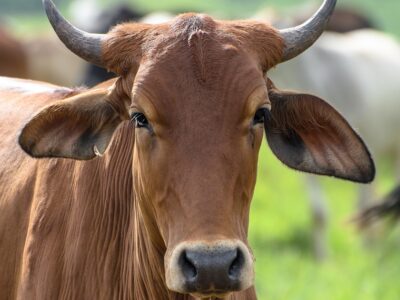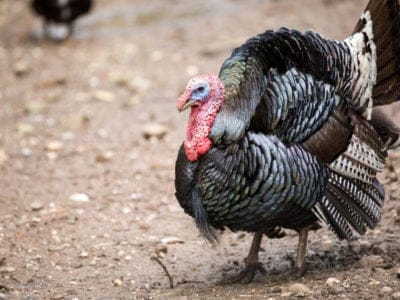Below you can find a complete list of Puerto Rican animals. We currently track 190 animals in Puerto Rico and are adding more every day!
Puerto Rico is a small Caribbean island and an unincorporated territory of the United States. It is in the southeast Caribbean Sea. Puerto Rico is part of the Greater Antilles chain of islands. It borders the Dominican Republic to the east, the Virgin Islands to the west, and the Atlantic Ocean to the north.
A popular tourist destination, Puerto Rico has mountain peaks, coastal areas, and acres of tropical rainforest. More than one-fourth of the island is covered in mountains and hills. Lush, humid rainforest areas cover the northern part of the island.
The southern side has dry, scrubby plains.
Puerto Rico is home to many exotic animal species. It has over 200 unique bird species. The island has no large native mammals, and its small mammals include bats and shrews. Although they are not native, mongooses also live in Puerto Rico.
The island has a high number of amphibians and reptiles, including nonpoisonous snakes, lizards, frogs, and iguanas.
The Official National Animal of Puerto Rico

The coqui frog is the unofficial national animal of Puerto Rico.
©Jeremy A. Casado/Shutterstock.com
Puerto Rico does not have an official national animal, but the common coqui frog (Eleutherodactylus coqui) is an important cultural symbol and an unofficial national animal. There are 17 species of coqui, and 14 are endemic to Puerto Rico.
A popular saying on the island is, “De aqui como el coqui,” which translates to, “From here, like the coqui.”
The common coqui frog, also known as Eleutherodactylus coqui, is a small tree frog that is native to Puerto Rico. Despite its small size, this frog is known for its loud and distinctive call, which has made it a beloved symbol of the island.
The common coqui frog is a small frog, typically measuring less than 2 inches in length. It has a plump, round body and large eyes that are used to locate prey. The skin of the coqui frog is typically brown or gray with a mottled pattern, and it has small, sticky pads on its toes that allow it to climb trees and other surfaces.
The call of the common coqui frog is one of its most distinctive features. Males of the species make a loud, high-pitched call that sounds like “co-kee, co-kee.” The call is repeated rapidly, creating a distinctive and often deafening chorus. In fact, the coqui frog is known for being one of the loudest frogs in the world, with a call that can be heard up to half a mile away.
The Official Bird of Puerto Rico
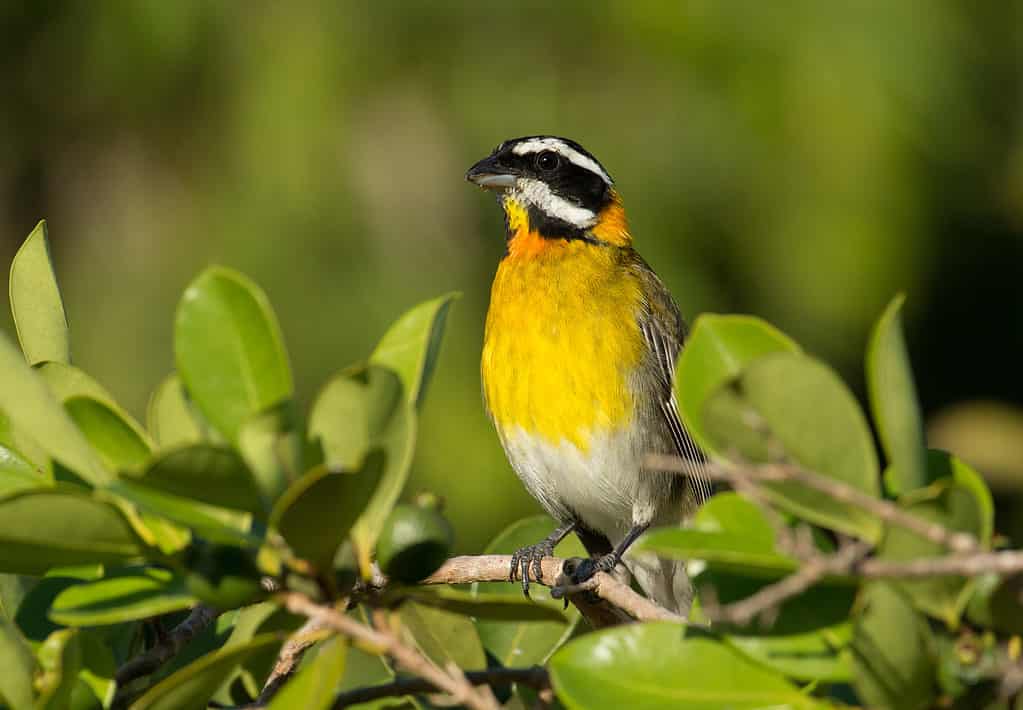
The official bird of Puerto Rico is the Puerto Rico Spindalis.
©Julio Salgado/Shutterstock.com
The official bird of Puerto Rico is the Puerto Rico Spindalis, also known as the striped-headed tanager. Easily recognized by its black and white stripes and bright yellow-orange chest, this songbird is a common sight throughout Puerto Rico.
The Puerto Rico Spindalis, also known as Spindalis portoricensis, is a colorful songbird that is endemic to Puerto Rico. It is a member of the tanager family and is one of the island’s most distinctive and recognizable bird species.
The Puerto Rico Spindalis is a small bird, typically measuring around 6 inches in length. It has a bright yellow breast and a black head, with a distinctive red band across the forehead. The wings are black and white, and the tail is black with white tips. The female is similar in appearance to the male but has a duller yellow breast.
The Puerto Rico Spindalis is primarily found in forested habitats, including both wet and dry forests. It is an omnivore, feeding on a variety of insects, fruits, and seeds. The bird is known for its distinctive song, which is a series of melodious, whistled notes that sound like “sweet-sweet-sweet, cher-cher-cher.” The song is often heard in the early morning and late afternoon, when the bird is most active.
The Largest Animals that Live in Puerto Rico
Puerto Rico is home to a number of large and impressive animals, both on land and in the water. Here are some of the largest animals that can be found in Puerto Rico:
- West Indian Manatee: The West Indian manatee is a large, herbivorous marine mammal that can grow up to 13 feet in length and weigh over 1,000 pounds. These gentle giants are found in the waters surrounding Puerto Rico and are listed as an endangered species.
- Humpback Whale: Humpback whales are a common sight in the waters off the coast of Puerto Rico, particularly during the winter months when they migrate to the area to breed and give birth. These massive creatures can grow up to 50 feet in length and weigh up to 40 tons.
- Leatherback Sea Turtle: The leatherback sea turtle is the largest of all sea turtles and can be found in the waters around Puerto Rico. These turtles can grow up to 7 feet in length and weigh up to 2,000 pounds.
- Puerto Rican Boa: The Puerto Rican boa is a large, non-venomous snake that can grow up to 6 feet in length. While not as big as some of the other animals on this list, the boa is still an impressive sight and an important part of Puerto Rico’s natural heritage.
These are just a few examples of the largest animals that can be found in Puerto Rico.
With its diverse array of habitats and ecosystems, the island is home to a wide variety of fascinating and impressive creatures that are well worth seeking out and observing in their natural habitats.
Rarest Animals in Puerto Rico
Puerto Rico is a tropical paradise with a rich variety of wildlife, from colorful birds to majestic sea turtles. Unfortunately, many of these species are threatened or endangered due to habitat loss, pollution, and other human activities.
Let’s take a closer look at some of the rarest animals in Puerto Rico:
- Puerto Rican Parrot: The Puerto Rican parrot, also known as the iguaca, is the only native parrot species in Puerto Rico. It’s also one of the rarest parrot species in the world, with a population of fewer than 200 individuals. The main threats to the parrot’s survival are habitat loss and predation by non-native species, such as rats and mongooses.
- Leatherback Sea Turtle: The leatherback sea turtle is the largest of all sea turtle species and is found in oceans all around the world. In Puerto Rico, the leatherback sea turtle is one of the rarest sea turtle species, with a declining population due to habitat loss and hunting. Conservation efforts are being made to protect the turtles and their nesting sites on Puerto Rican beaches.
- Mona Island Iguana: The Mona Island iguana is a critically endangered species of iguana that’s found only on Mona Island, off the west coast of Puerto Rico. The iguanas are threatened by habitat loss and predation by non-native species, such as feral cats and goats. There are believed to be fewer than 500 individuals left in the wild.
- Puerto Rican Boa: The Puerto Rican boa is a species of boa constrictor that’s found only in Puerto Rico. It’s listed as a threatened species due to habitat loss and over-collection for the pet trade. The boa plays an important ecological role in controlling populations of rats and mice in its natural habitat.
- Giant Anole: The giant anole, also known as the Puerto Rican giant anole, is a large species of lizard that’s found only in Puerto Rico. It’s listed as a threatened species due to habitat loss and predation by non-native species, such as feral cats and mongooses. The giant anole is an important part of the ecosystem, feeding on insects and other small animals.
In conclusion, Puerto Rico is home to some of the rarest animals in the world, with many species facing significant threats to their survival.
Where To Find the Top Wild Animals in Puerto Rico
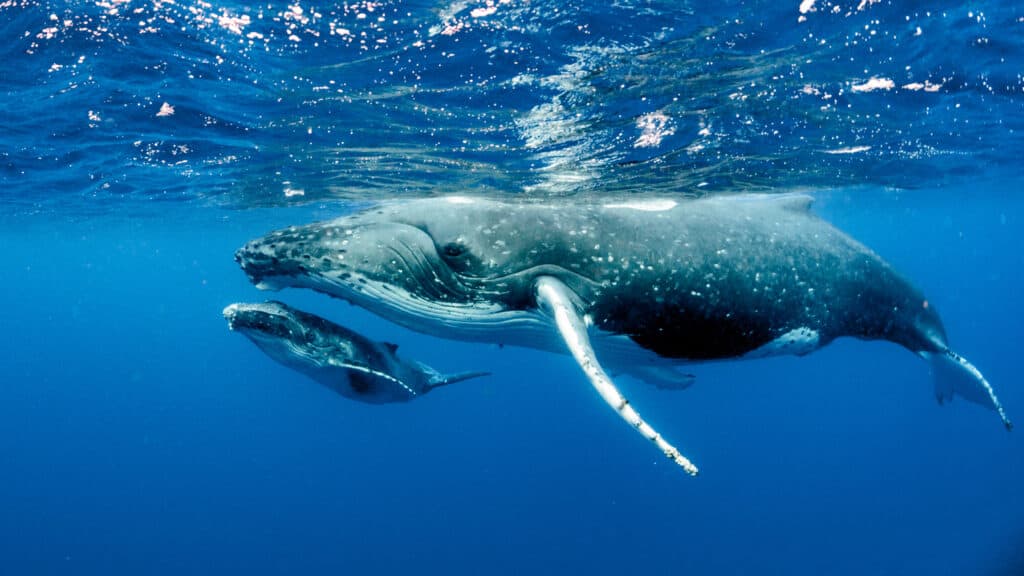
The waters surrounding Puerto Rico are important breeding areas for humpback whales.
©Imagine Earth Photography/Shutterstock.com
The waters surrounding Puerto Rico are important breeding areas for humpback whales. Whale watching is a popular activity in Puerto Rico.
- The Caribbean National Forest is a wonderful place to see many of the island’s exotic bat species, including the red fig-eating bat (Stenoderma rufum), sooty mustached bat (Pteronotus quadridens), big brown bat (Eptesicus fuscus), and Mexican free-tailed bat (Tadarida brasiliensis). It is a protected area where you can see rare species of orchids and the small green Puerto Rican parrot.
- Bosque Cambalache National Park is a large forest reserve that’s popular among bird watchers. Birders can spot exotic native species like the Puerto Rican Woodpecker, Puerto Rican bullfinch, and Puerto Rican cuckoo.
- Cabo Rojo Wildlife Refuge is part of the Western Hemisphere Shorebird Reserve Network. It is an excellent place to see gulls, herons, and other waterfowl.
- Scuba diving and snorkeling are popular activities on Vieques Island and Culebra Island. The clear waters are filled with exotic fish, manta rays, sea turtles, and humpback whales. These islands are protected areas with healthy coral reef formations.
The Most Dangerous Animals in Puerto Rico Today

Close-up of a male red-headed mouse spider (Missulena occatoria).
©Wright Out There/Shutterstock.com
While Puerto Rico is generally a safe place for tourists and locals alike, there are a few animals that can be dangerous if encountered. One of the most notable is the Puerto Rican boa, a non-venomous snake that can grow up to 6 feet in length.
While the snake is not aggressive and typically avoids contact with humans, it can deliver a painful bite if provoked. Another potentially dangerous animal is the tarantula, which is found in forests and other wooded areas. While tarantulas are not generally aggressive towards humans, their bite can cause pain and swelling.
Another animal that can be dangerous in Puerto Rico is the Caribbean reef shark, which is found in the waters surrounding the island. While the shark is not typically aggressive towards humans, it can be dangerous if provoked or cornered.
Here are a few honorable mentionable:
- Giant centipede: This brightly colored insect can reach 12 inches in length. Its bite is extremely painful. It’s rare to come across them unless you’re hiking in the rainforest. The giant centipede’s venom is not fatal, but it will make you very sick.
- Spiders and scorpions: Like most islands, Puerto Rico has a high number of spiders, including the brown recluse. It also has a healthy population of scorpions. Scorpions won’t kill you, but their bite is painful.
Extinct and Endangered Animals in Puerto Rico
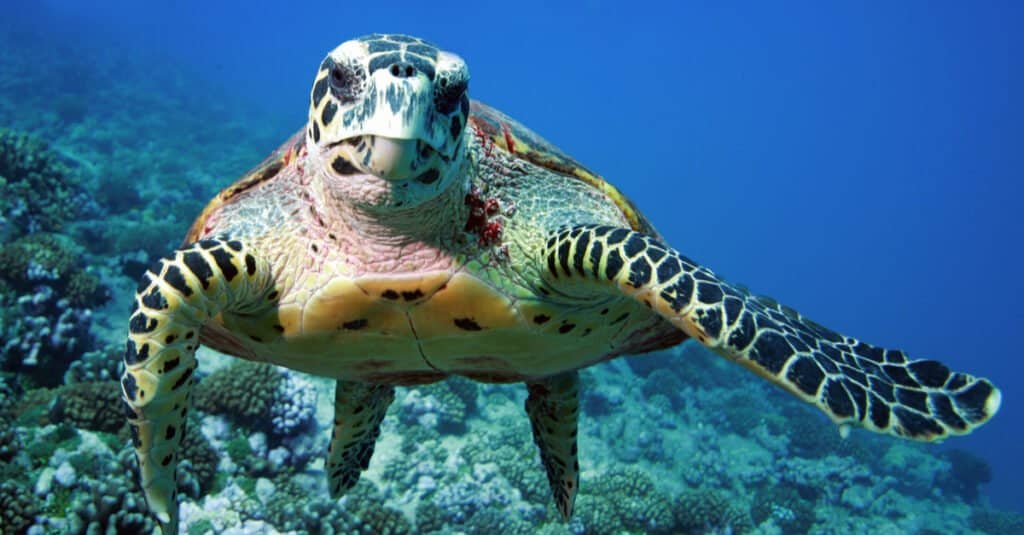
Though some reptiles give birth to live young, most lay eggs.
©Achimdiver/Shutterstock.com
Puerto Rico is home to a number of unique animal species, many of which are threatened by habitat loss, pollution, and other factors. Some species have already gone extinct, while others are considered endangered and are in danger of disappearing in the near future.
One of the most notable extinct animals from Puerto Rico is the Puerto Rican ground sloth, a large herbivore that lived on the island until around 4,000 years ago. The sloth was about the size of a black bear and weighed up to 300 pounds. Other extinct species include the Puerto Rican cave rat and the Puerto Rican ameiva, a type of lizard.
Today, many animals in Puerto Rico are considered endangered, including the Puerto Rican parrot, which is one of the most endangered birds in the world. The parrot is a bright green bird with a distinctive blue forehead and red feathers under its wings.
Habitat loss, hunting, and the introduction of non-native species have all contributed to its decline. Additionally, here are a few endangered animals:
- Puerto Rican parrot: This rare bird is one of the 10 most endangered birds in the world. It is a small parrot that almost became extinct in 1975. Since then, conservation efforts have helped preserve this unique bird.
- Sea turtles: The hawksbill turtle and leatherback sea turtle are native to Puerto Rico. Both species are in danger of becoming extinct.
Several native species have become extinct in Puerto Rico. Conservation groups and the Puerto Rican government have taken steps to reverse population declines among its most endangered animals.
Puerto Rico’s Unique Wildlife

These species are very social, living in flocks of at least 20 or more. They use their large numbers to protect them from predators as they forage on the ground.
©iStock.com/intek1
Puerto Rico’s unique location and ecology have given rise to a diverse array of plant and animal life that cannot be found anywhere else in the world. The island’s wildlife includes a variety of endemic species, which are found only in Puerto Rico and a few nearby islands.
Other unique animals include the Puerto Rican parrot, the Puerto Rican boa, and the Puerto Rican broad-winged hawk, all of which are found only in Puerto Rico and a few nearby islands.
Puerto Rico is also home to a variety of marine life, including coral reefs, sea turtles, and dolphins. The island’s coastal areas and offshore waters provide important habitats for a variety of fish and other marine creatures, including the endangered hawksbill turtle and the Caribbean reef shark.
It is a small island with many exotic species. Its clear waters are home to sea turtles, manatees, and manta rays. Small mammals, snakes, and bats share the forests with iguanas and frogs. Wildlife and bird tours are popular activities for visitors to the island.
You can also read:
- the best dog parks in San Juan, Puerto Rico.
Furthermore: native trees in Puerto Rico:
Puerto Rico has tons of beautiful native trees embellishing its land. From well-known palms to rare guavas, it’s a popular destination for tree lovers!
Puerto Rican Animals

Admiral Butterfly
Stunningly beautiful wings

Amazon Parrot
These parrots can be trained to be "talking birds" that mimic human speech
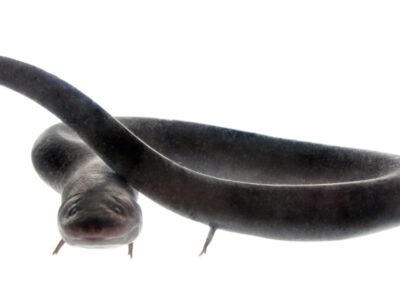
American Eel
Don't eat raw eel! Their blood is poisonous to humans when consumed raw.
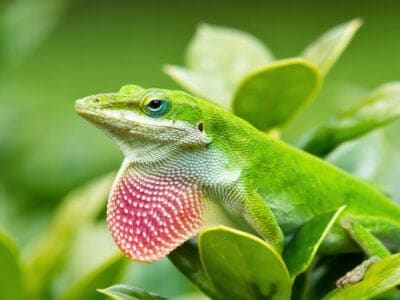
Anole Lizard
There are just under 400 species, several of which change color.

Ant
First evolved 100 million years ago!
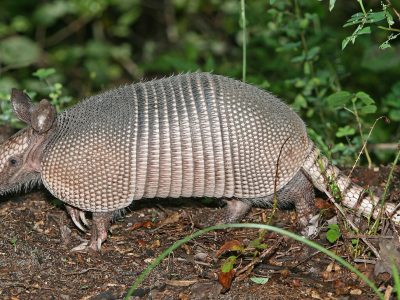
Armadillo
Can curl into a hard, protective ball!

Armyworm
They are so named because they "march" in armies of worms from one crop to another in search of food

Barn Owl
Found everywhere around the world!

Barn Swallow
Older offspring help care for new hatchlings.

Bat
Detects prey using echolocation!

Bear
There are 8 different species!

Bed Bugs
Bed bugs feed for 4-12 minutes.

Bee
Rock paintings of bees date back 15,000 years

Beetle
There are more than 350,000 different species

Bird
Not all birds are able to fly!

Biscuit Beetle
The biscuit beetle form a symbiotic relationship with yeast

Black Widow Spider
They typically prey on insects!
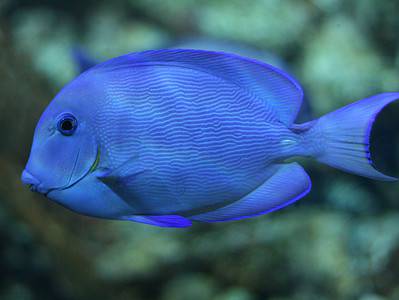
Blue Tang
One of the most colorful members of the genus Acanthurus

Booby
Seabirds found across the South Pacific!

Brazilian Treehopper
“Mild-Mannered Minimonsters”

Brown Dog Tick
Can live its entire life indoors

Burrowing Owl
The burrowing owl lives in underground burrows

Butterfly
There are thought to be up 17,500 species!

Caecilian
Some species' babies use their hooked or scraper-like teeth to peel off and eat their mother's skin

Camel Cricket
The camel crickets that are found in the USA are light brown in color. They also have dark streaks all over their body.

Carpenter Ant
Carpenter ants can lift up to seven times their own weight with their teeth!

Cat
May have been domesticated up to 10,000 years ago.

Caterpillar
The larvae of a moth or butterfly!

Catfish
There are nearly 3,000 different species!

Centipede
There are about 3,000 documented species!

Chicken
First domesticated more than 10,000 years ago!

Cockroach
Dated to be around 300 million years old!

Codling Moth
Pupae are able to undergo diapause to survive poor fruit yield years and winter.
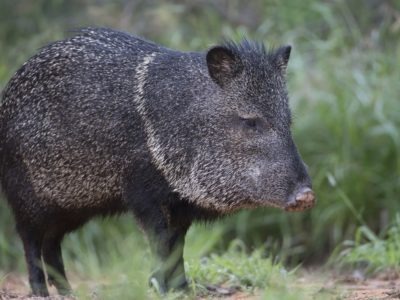
Collared Peccary
Form bands of up to 12 individuals!

Common Furniture Beetle
The common furniture beetle feeds exclusively on wood

Common House Spider
House spiders have the ability to eat most insects in a home.

Common Yellowthroat
The Common Yellowthroat stays close to the ground and uses stealth to survive!
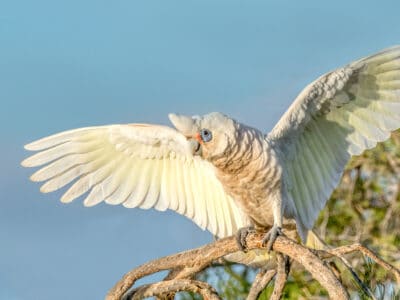
Corella
Corella birds are noisy, especially during the early morning or late evening.

Cormorant
They can fly 35 mph and dive 150 feet below water.

Cow
There are nearly 1.5 billion worldwide!

Crab
There are 93 different crab groups

Crab Spider
Crab Spiders can mimic ants or bird droppings

Cricket
Male crickets can produce sounds by rubbing their wings together

Crocodile
Have changed little in 200 million years!

Crocodylomorph
Crocodylomorphs include extinct ancient species as well as 26 living species today.

Crow
A group of these birds is called a Murder.

Dog
First domesticated in South-East Asia!

Dog Tick
Dog ticks feed on dogs and other mammals

Donkey
First domesticated 5,000 years ago!

Dragonfly
It's larvae are carnivorous!
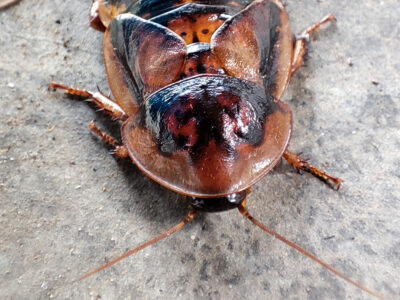
Dubia Cockroach
The most popular species of feeder roach

Duck
Rows of tiny plates line their teeth!

Dung Beetle
The dung beetle can push objects many times its own weight

Earthworm
They are hermaphrodites, which means they have male and female organs

Earwig
There are nearly 2,000 different species!

Eel
Eels can be a mere few inches long to 13 feet!

False Widow Spider
False spiders actually prey on black widow spiders and other hazardous spiders

Firefly
The firefly produces some of the most efficient light in the world
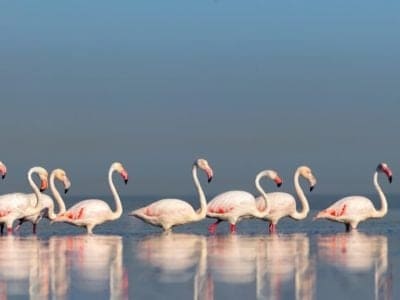
Flamingo
Sleeps on just one leg!

Flea
Adult fleas can jump up to 7 inches in the air

Fly
There are more than 240,000 different species!

Flying Squirrel
Can glide up to 90 meters!

Frog
There are around 7,000 different species!

Fruit Fly
Fruit flies are among the most common research animals in the world
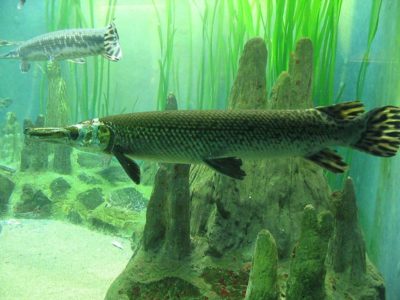
Gar
Can grow to more than 3m long!

Gecko
There are thought to be over 2,000 species!

German Cockroach
The most common type of urban roach

Glowworm
Found inhabiting dense woodland and caves!

Gnat
Males form large mating swarms at dusk

Grasshopper
There are 11,000 known species!
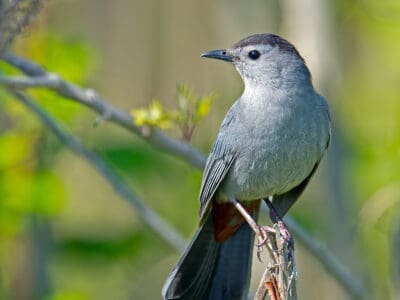
Gray Catbird
Their songs have cat-like qualities and can mimic other birds and animals, like tree frogs.
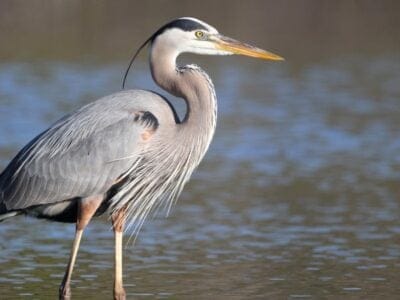
Great Blue Heron
Their wingspan is larger than an eagle’s; both males and females help hatch the eggs; rich in symbolism
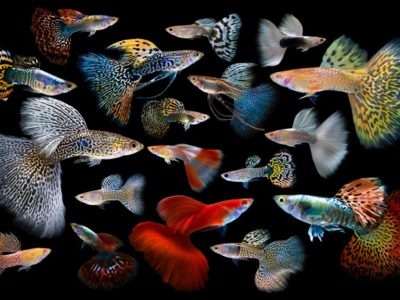
Guppy
Also known as the Millionfish!

Hamster
Able to run as quickly backwards as forwards!
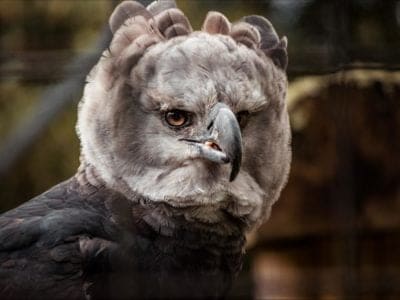
Harpy Eagle
Talon's the size of a grizzly bear's claws!

Harris’s Hawk
Their vision is eight times better than a human's

Hawk Moth Caterpillar
Many hawk moth caterpillars eat toxins from plants, but don’t sequester them the way milkweed butterflies do. Most toxins are excreted.

Hercules Beetle
This dynastine scarab beetle makes a weird huffing sound when it’s disturbed.
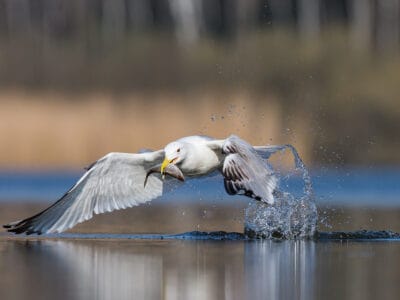
Herring Gull
They are loud, spirited birds with raucous cries that sound like bursts of laughter.

Honey Bee
There are only 8 recognized species!

Horse
Has evolved over 50 million years!

Horsefly
Horseflies have been seen performing Immelmann turns, much like fighter jets.

Housefly
The fly has no teeth

Human
Thought to have orignated 200,000 years ago!

Hummingbird
Beat their wings up to 80 times per second!

Huntsman Spider
Some huntsman spiders have an interesting way of moving around. Some cartwheel while others do handsprings or backflips.

Ibis
Found in swamps, marshes and wetlands!
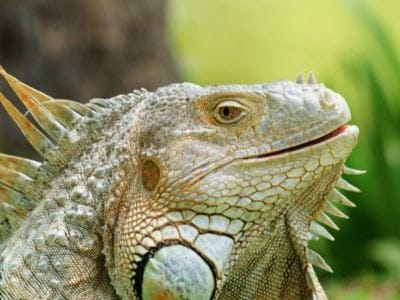
Iguana
Uses visual signals to communicate!

Insects
There are an estimated 30 million species!

Jacana
The jacana has the ability to swim underwater

Jack Crevalle
One of the biggest species in the Caranx genus

Jumping Spider
Some can jump 50 times the length of their bodies

Kentucky Warbler
The Kentucky Warbler appears to wear bright yellow cat-eye glasses!

Kingfisher
Inhabits wetlands and woodlands worldwide!

Ladybug
There are more than 5,000 species worldwide!

Leatherback Sea Turtle
They are the largest living turtle and the only sea turtle without a hard shell!

Leech
Has 10 pairs of eyes!

Lizard
There are around 5,000 different species!
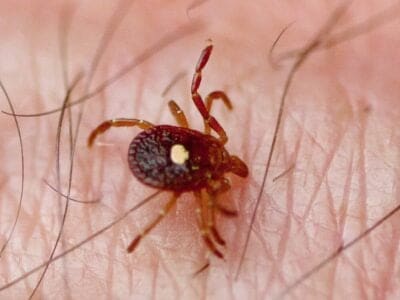
Lone Star Tick
Only females have the ‘lone star’ marking

Macaw
The largest species of parrot in the world!

Maggot
Will only live in wet areas
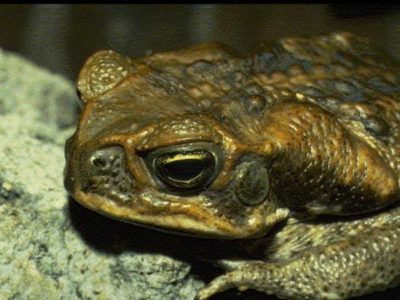
Marine Toad
Produces a toxin used in arrow darts!

Mayfly
There are 2,500 known species worldwide!

Mealybug
They have a symbiotic relationship with ants.

Millipede
Some species have a poisonous bite!

Mockingbird
Mockingbirds are incredible mimics that can learn hundreds of songs!

Mole Cricket
Adult Mole crickets may fly as far as 5 miles during mating season and are active most of the year.
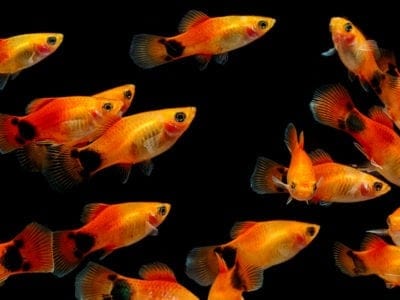
Molly
Known for their calm and peaceful nature!
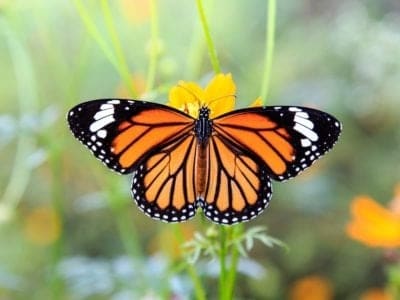
Monarch Butterfly
During migration, Monarch Butterflies may travel 250 or more miles each day.

Mongrel
Has characteristics of two or more breeds!

Monkey
There are around 260 known species!

Moorhen
Feeds on aquatic insects and water-spiders!

Mosquito
Only the female mosquito actually sucks blood

Moth
There are 250,000 different species!
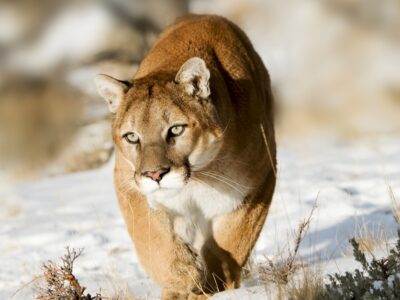
Mountain Lion
Has no real natural predators!
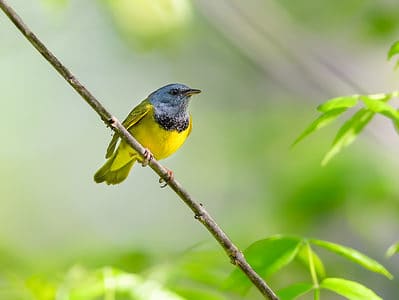
Mourning Warbler
The Mourning Warbler was named for its gray head, which resembles a mourning veil!

Mouse
Found on every continent on Earth!

Mule
The offspring of a horse and donkey parents!

Nematode
Nematodes range in size from 1/10 of an inch to 28 feet long

No See Ums
There are more than 5,000 species.
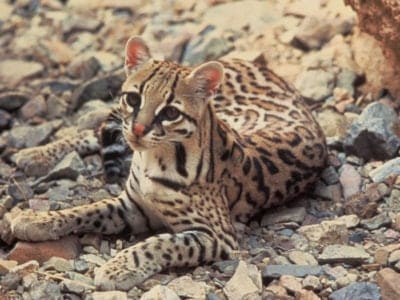
Ocelot
Also known as the Painted Leopard!

Orb Weaver
Females are about four times the size of males

Otter
There are 13 different species worldwide

Owl
The owl can rotate its head some 270 degrees
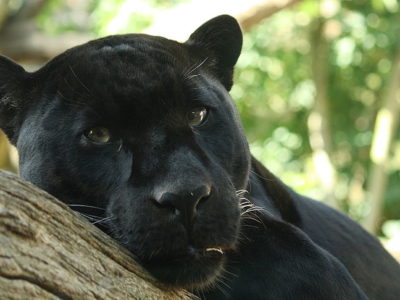
Panther
Prefers to hunt at night than during the day!

Parrot
Can live for up to 100 years!

Pheasant
Females lay between 8 and 12 eggs per clutch!

Pigeon
They can find their way back to their nests from up to 1300 miles away.
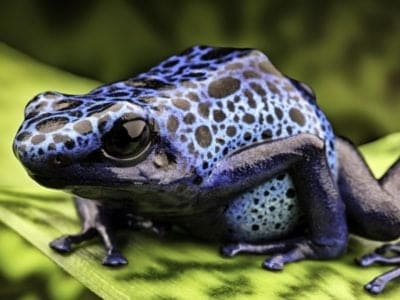
Poison Dart Frog
Inhabits the jungles of Central and South America!

Pompano Fish
They are bottom-feeders

Porcupine
There are 30 different species worldwide!

Praying Mantis
The mantis can turn its head 180 degrees.

Puma
Has longer back legs than front legs!
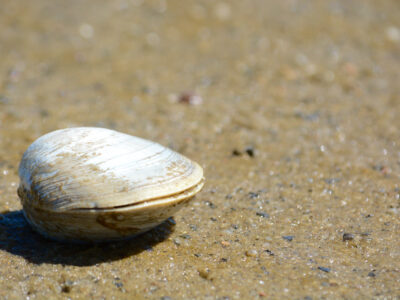
Quahog Clam
Their hinged shell protects their soft body

Quail
Inhabits woodland and forest areas worldwide!
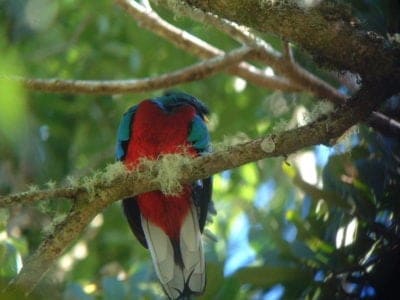
Quetzal
The tail feathers of the male can be 1m long!

Rat
Omnivores that eat anything!

Rattlesnake
Rattlesnakes may have evolved their rattle to warn bison away from them.

Ring-billed Gull
The ring-billed gull feeds on vast quantities of human waste and garbage.

River Turtle
Inhabits freshwater habitats around the world!

Rodents
The capybara, the world’s largest rodent, likes to be in and around bodies of water. Because of this, the Catholic Church in South America decided that it was a fish, and people were allowed to eat it during Lent and First Fridays.

Rooster
Will mate with the entire flock!
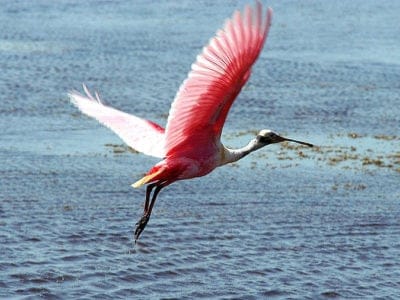
Roseate Spoonbill
The only Spoonbill in the western hemisphere!
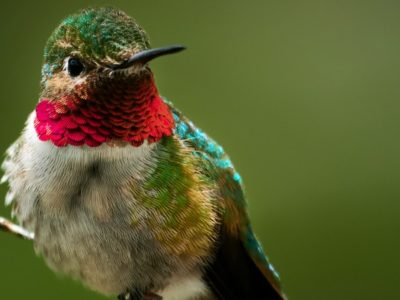
Ruby-Throated Hummingbird
Ruby-throated hummingbirds can beat their wings more than 50 times per second.
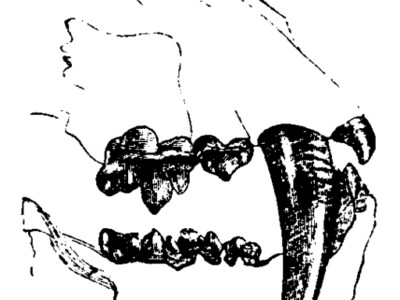
Saber-Toothed Tiger
Canines up to 7 inches long!

Sable Ferret
Ferrets were used during the Revolutionary War to keep down the rat population.

Salamander
There are more than 700 different species!

Sand Crab
The sand crab burrows beneath the sand with its tail

Scorpion
There are around 2,000 known species!

Sea Eagle
The sea eagle tends to mate for life with a single partner

Seahorse
Males give birth to up to 1,000 offspring!
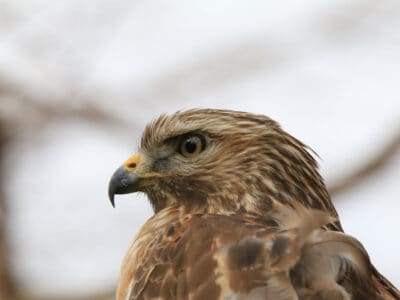
Sharp-Shinned Hawk
In captivity, sharp-shinned hawks can live up to 13 years. However, in the wild, this number is significantly reduced to 3 years!

Shrimp
There are 2,000 different species worldwide!

Skink Lizard
Some skinks lay eggs in some habitats while giving birth to skinklets in other habitats.
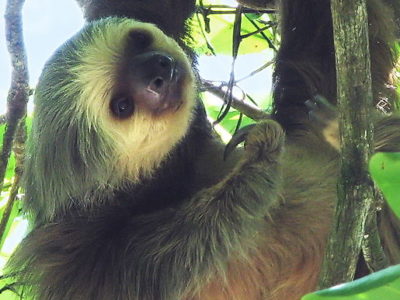
Sloth
It's body temperature is between 30 - 34 degrees!

Slug
They glide around on one foot, which is aided by the slime they produce

Smokybrown Cockroach
Has up to 45 eggs per egg case

Snail
There are nearly 1,000 different species!

Snake
There are around 4,000 known species worldwide

Sparrow
There are 140 different species!

Spider Wasp
They prey on spiders to feed their larvae or they parasitize other spider wasps.

Squirrel
Small rodents found in woodlands worldwide!

Stick Insect
There are more than 3,000 different species!

Swan
Populations have been affected by pollution!

Tarantula Hawk
Tarantula hawks are excellent pollinators, especially for milkweed.

Termite
Their mounds can be up to 9 meters tall!

Thrush
The American robin is called the robin because its red breast reminded European settlers of the robin back in the old country.

Tick
They inject hosts with a chemical that stops them from feeling the pain of the bite

Tiger Beetle
The adult tiger beetle is one of the fastest land insects in the world

Tortoise
Can live until they are more than 150 years old!
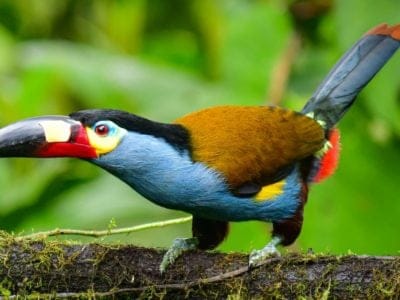
Toucan
There are more than 40 different species!

Tree Frog
Found in warmer jungles and forests!

Turtles
Some species of aquatic turtles can get up to 70 percent of their oxygen through their butt.
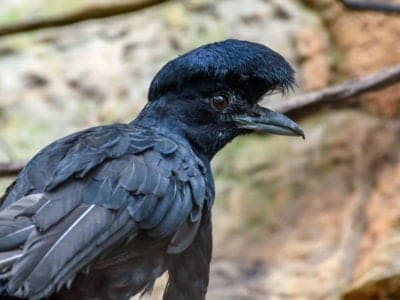
Umbrellabird
Migrates up and down the mountains!

Upland Sandpiper
They make jerky movements as they walk through the grass, searching for food.

Vampire Bat
Have a heat sensor on the end of their nose!

Vinegaroon
Vinegaroons can spray 19 times before the glands are depleted

Vulture
There are 30 different species worldwide!

Wasp
There are around 75,000 recognised species!

Whiptail Lizard
Many whiptail species reproduce asexually.
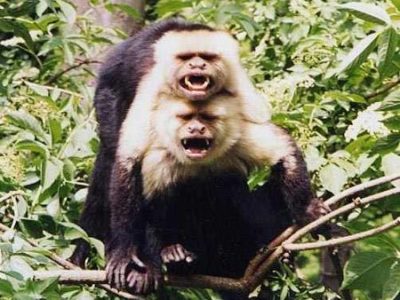
White-Faced Capuchin
One of the world's most intelligent monkeys!

White Ferret / Albino Ferrets
There are two different types of white ferrets!

Wolf Spider
Carnivorous arachnid that hunts its prey.

Woodlouse
This animal can roll up into a ball

Woodpecker
There are 200 different species!

Worm
Doesn’t have eyes.
Puerto Rican Animals List
- Admiral Butterfly
- Amazon Parrot
- American Eel
- Anole Lizard
- Ant
- Armadillo
- Armyworm
- Barn Owl
- Barn Swallow
- Bat
- Bear
- Bed Bugs
- Bee
- Beetle
- Bird
- Biscuit Beetle
- Black Widow Spider
- Blue Tang
- Booby
- Brazilian Treehopper
- Brown Dog Tick
- Burrowing Owl
- Butterfly
- Caecilian
- Camel Cricket
- Carpenter Ant
- Cat
- Caterpillar
- Catfish
- Centipede
- Chicken
- Cockroach
- Codling Moth
- Collared Peccary
- Common Furniture Beetle
- Common House Spider
- Common Yellowthroat
- Corella
- Cormorant
- Cow
- Crab
- Crab Spider
- Cricket
- Crocodile
- Crocodylomorph
- Crow
- Cuckoo
- Dog
- Dog Tick
- Donkey
- Dragonfly
- Dubia Cockroach
- Duck
- Dung Beetle
- Earthworm
- Earwig
- Eel
- False Widow Spider
- Firefly
- Flamingo
- Flea
- Fly
- Flying Squirrel
- Frog
- Fruit Fly
- Gar
- Gecko
- German Cockroach
- Glowworm
- Gnat
- Grasshopper
- Gray Catbird
- Great Blue Heron
- Guppy
- Hamster
- Harpy Eagle
- Harris’s Hawk
- Hawk Moth Caterpillar
- Hercules Beetle
- Herring Gull
- Honey Bee
- Horse
- Horsefly
- Housefly
- Human
- Hummingbird
- Huntsman Spider
- Ibis
- Iguana
- Insects
- Jacana
- Jack Crevalle
- Jumping Spider
- Kentucky Warbler
- Kingfisher
- Ladybug
- Leatherback Sea Turtle
- Leech
- Lizard
- Lone Star Tick
- Macaw
- Maggot
- Marine Toad
- Mayfly
- Mealybug
- Millipede
- Mockingbird
- Mole Cricket
- Molly
- Monarch Butterfly
- Mongrel
- Monkey
- Moorhen
- Mosquito
- Moth
- Mountain Lion
- Mourning Warbler
- Mouse
- Mule
- Nematode
- No See Ums
- Ocelot
- Orb Weaver
- Otter
- Owl
- Ox
- Panther
- Parrot
- Pheasant
- Pigeon
- Poison Dart Frog
- Pompano Fish
- Porcupine
- Praying Mantis
- Puma
- Quahog Clam
- Quail
- Quetzal
- Rat
- Rattlesnake
- Ring-billed Gull
- River Turtle
- Rodents
- Rooster
- Roseate Spoonbill
- Ruby-Throated Hummingbird
- Saber-Toothed Tiger
- Sable Ferret
- Salamander
- Sand Crab
- Scorpion
- Sea Eagle
- Seahorse
- Sharp-Shinned Hawk
- Shrimp
- Skink Lizard
- Sloth
- Slug
- Smokybrown Cockroach
- Snail
- Snake
- Sparrow
- Spider Wasp
- Squirrel
- Stick Insect
- Swallowtail Butterfly
- Swan
- Tarantula Hawk
- Termite
- Thrush
- Tick
- Tiger Beetle
- Tortoise
- Toucan
- Tree Frog
- Turkey
- Turtles
- Umbrellabird
- Upland Sandpiper
- Vampire Bat
- Vinegaroon
- Vulture
- Wasp
- Whiptail Lizard
- White-Faced Capuchin
- White Ferret / Albino Ferrets
- Wolf Spider
- Woodlouse
- Woodpecker
- Worm
Animals in Puerto Rico FAQs (Frequently Asked Questions)
What Kind of Animals Live in Puerto Rico?
Puerto Rico has many exotic animals, including unique wildlife you will only find here.
Marine mammals:
Puerto Rico has dolphins, sharks and whales.
One of the most popular marine mammals is the Antillean manatee (Trichechus manatus manatus), which uses the waters around the island as its primary breeding ground. One of Puerto Rico’s municipalities, Manati, gets its name from this sea creature.
Bats:
Puerto Rico has 13 bat species, of which six are endemic to the island. It is one of the few places you will see unusual species like the Antillean fruit bat (Brachyphylla cavernarum) and Antillean ghost-faced bat (Mormoops blainvillii).
Birds:
Puerto Rico has about 350 bird species, of which 18 are endemic to the island. They include some of the rarest and most elusive birds in the world. It has tanagers, hummingbirds, flycatchers and passerines.
The common bird in Puerto Rico is the bananaquit (Coereba flaveola). This beautiful black and yellow bird is abundant on the island. Puerto Rico has 41 recognized subspecies of the bananaquit.
Reptiles and amphibians:
Puerto Rico has 11 species of snake, of which 10 are nonvenomous. The Puerto Rican racer (Borikenophis portoricensis) secretes venom, but there are no recorded fatalities from its bite. Puerto Rico has several species of iguana, including the Mona ground iguana (Cyclura cornuta stejnegeri), which is endemic to Mona Island. The largest snake on the island is the Puerto Rican boa.
The spectacled caiman (Caiman crocodilus) is the only member of the crocodile family in Puerto Rico. Also known as the white caiman, it is a relatively small crocodile that reaches an average length of about 5 feet.
Monkeys:
Monkeys are not native to Puerto Rico, but two monkey species were introduced here. A small colony of Rhesus macaques lives on Cayo Santiago, and about 35 squirrel monkeys live in the Sabana Seca region.
What Is the Most Dangerous Animal in Puerto Rico?
Mosquito: This tiny bug has caused thousands of deaths from chikungunya, an infectious disease that causes fever, extreme joint pain and rashes. There is no treatment for this disease and no vaccination for it. The only way to prevent is to avoid mosquito bites. Mosquitoes also transmit dengue fever and the West Nile virus.
What Predators Live in Puerto Rico?
Puerto Rico’s predators include bats, which are important for controlling mosquito populations. Mosquitoes are dangerous, and bats eat millions of them every day.
The spectacled caiman eats insects, small mammals, fish, crabs, and snails. This crocodile is not aggressive or dangerous to humans.
The Puerto Rican boa eats birds, lizards, rodents, and bats.
Are There Lions in Puerto Rico?
There are no big cats of any kind in Puerto Rico.
Are There Jaguars in Puerto Rico?
No, there are no jaguars in Puerto Rico.




